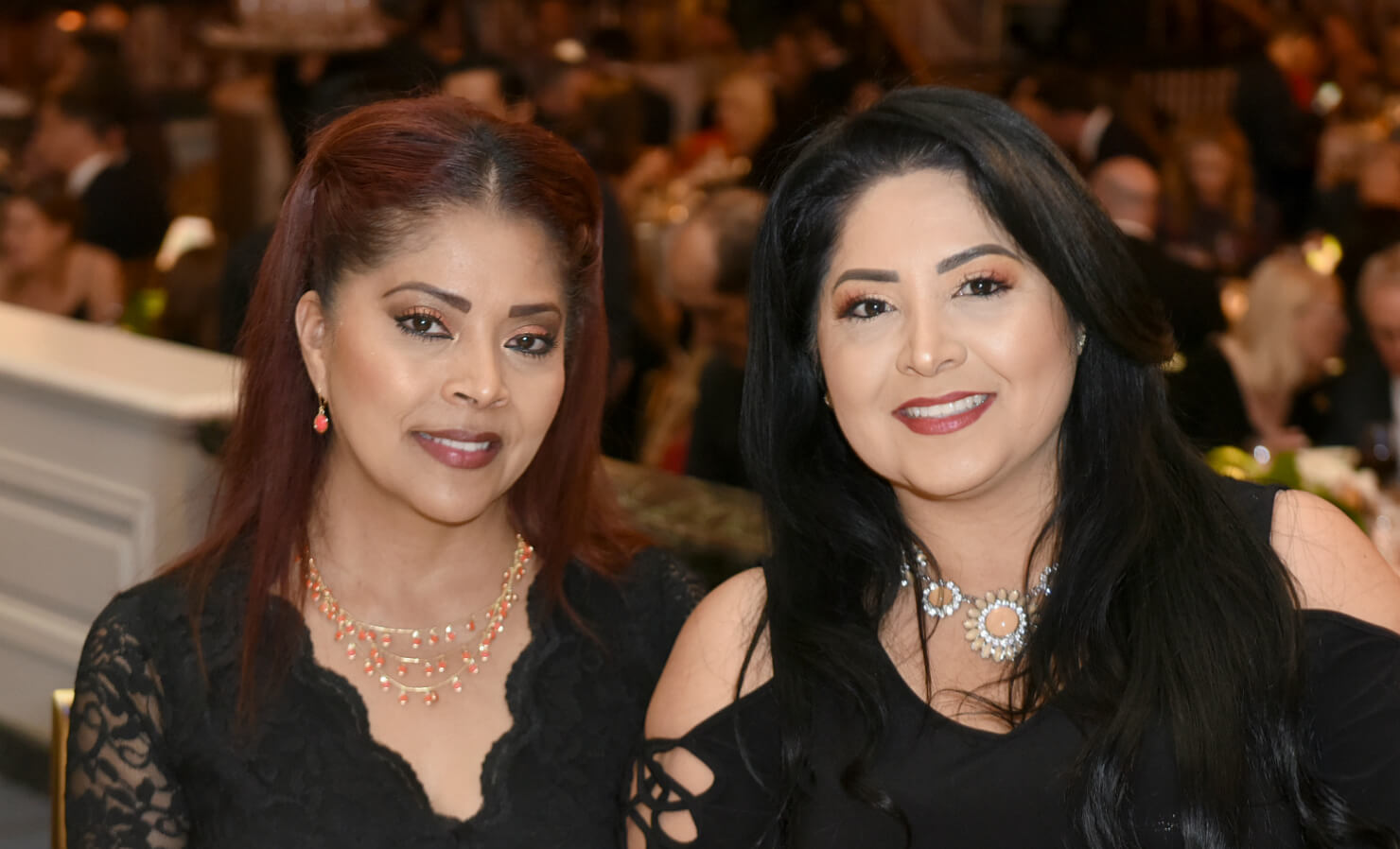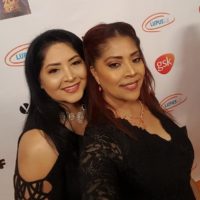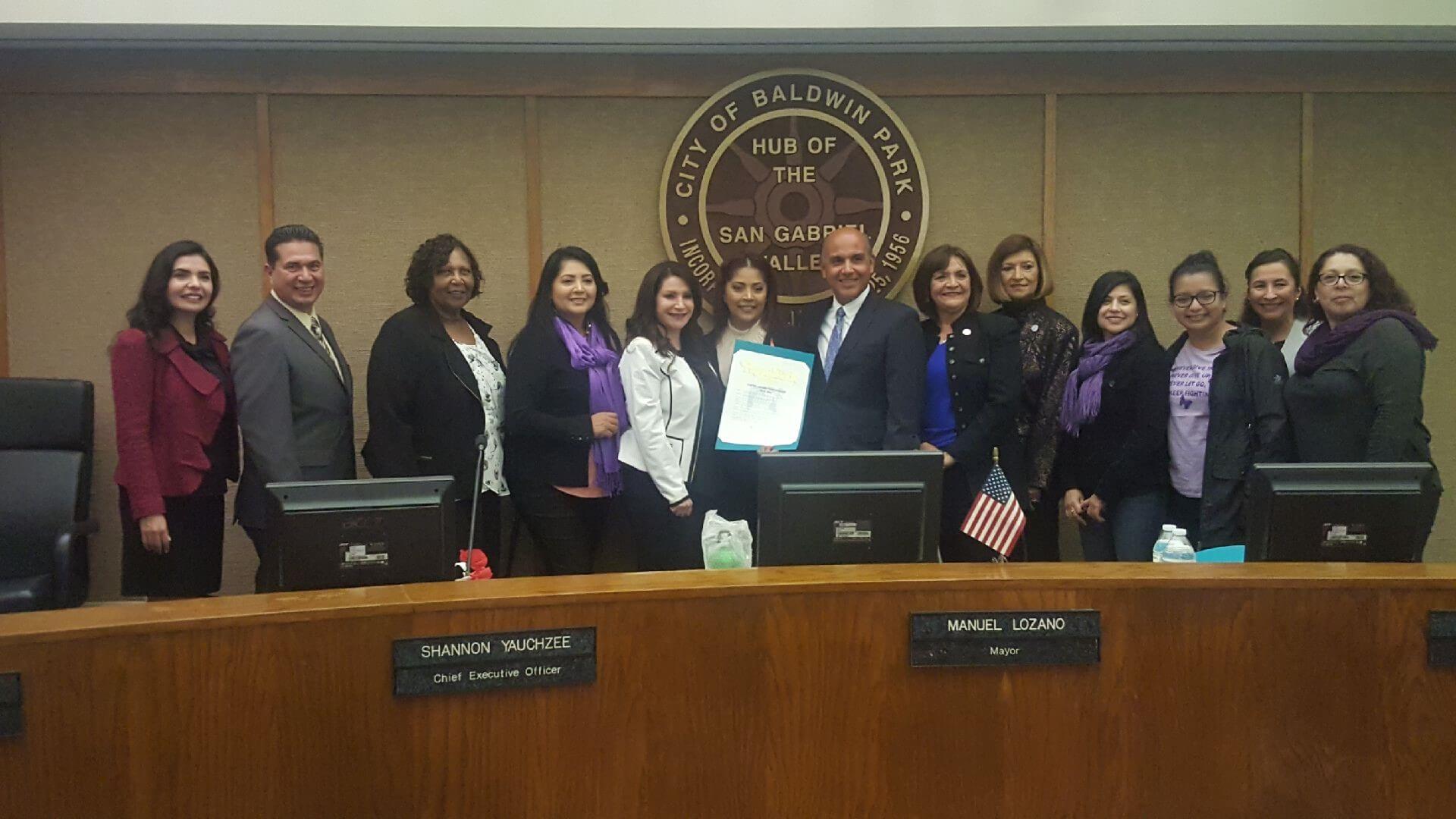

May 10, 2018

(L-R) Juana Mata and Estela Mata-Carcamo at Lupus LA’s Orange Ball on May 3rd, 2018.
In March, Los Angeles social worker Juana Mata was honored as the 48th Assembly District’s “Woman of the Year” by California State Assemblywoman Blanca Rubio. But Rubio was only confirming what many in the California lupus community already knew: Juana is a powerhouse who is just as committed to lupus advocacy and her family as she is to her 24-year career. Juana and her sister, Estela Mata-Carcamo, have been busy this month; in addition to running the support group they founded, Looms 4 Lupus, they have secured official Lupus Awareness Month proclamations from no fewer than 10 cities throughout Los Angeles County and beyond. To celebrate World Lupus Day on May 10th, we spoke to Juana about her life with lupus, her work, her motivations and inspirations. Read on for an illuminating interview, the first in our LupUS Together series.
Q: What does it mean to you to be the 48th Assembly District’s “Woman of the Year?” How did you react when you found out the news?
I am humbled, and honored to have been selected as the 48th Assembly District “Woman of the Year.” Being selected amongst many other women who do so much for our community, makes me feel proud and happy to know that what my parents taught me has given me the tools to do what makes me happy, which is to help others, respect and give all that I can to all in need.
I was very surprised. My sister Estela was the one that told me that I had been selected as woman of the year by Assemblywoman Blanca Rubio. The first thing that I thought of is, “Why do I get recognized for doing what I love and what my heart leads me to do?” Helping others is something I love to do, and I do it from my heart. I was born to help others and it feels great to do so.
 Q: You’re a social worker with the Los Angeles County Department of Children and Family Services? What made you get into this career?
Q: You’re a social worker with the Los Angeles County Department of Children and Family Services? What made you get into this career?
I have been working for DCFS for 24 years. I worked as Eligibility Supervisor at DCFS, but I wanted more interaction with children and their families. It was then when I decided to continue my education and become a social worker. I became a social worker in 2006 and I love being a children’s social worker for DCFS.
I knew that being a social worker was not easy, but I always loved listening, enjoyed helping others and I knew that becoming a social worker would give me the opportunity to help families during times of need, to support, guide and make a positive impact in their lives and most importantly to make sure children are safe.
Q: When did you begin having symptoms that led to your lupus diagnosis?
I was diagnosed with lupus in May 2009, however my symptoms began in November 2008. The first symptoms were things like waking up with stiff joints, so stiff that I could not do basic things such as getting out of bed, showering, combing my hair and putting my makeup on. I would have to massage my joints to eventually be able to move.
In February 2009, I was diagnosed with Rheumatoid Arthritis. More symptoms followed, my hair started falling out, followed by headaches, extreme fatigue, mood swings, bleeding gums followed by mouth sores. In April 2009, I had a very bad red scaly rash on my face, what I know now as the “butterfly rash.” I was still hoping to get some sort of answer to all these symptoms, but I was sent home with a rash ointment and no diagnosis.
Then the research began. I started looking into all the symptoms I was having and talking to my sister about it and all the symptoms led to lupus. It wasn’t until May 2009, when I just couldn’t take it any longer — I knew something was wrong. I felt it, I knew my body and knew there was something wrong with me and on that day I was not going to go home without a diagnosis. So I went to urgent care with black mouth sores, extreme fatigue and joint pains. The doctor ordered lab work and told me to go home. I refused to do so, and insisted on stat blood work which means to be done immediately. Even though that caused me to get an “Anxiety Diagnosis,” I didn’t care. The results came in, my platelets were at 6 thousand when normal is 130 thousand so I was sent to the emergency room immediately for further testing. The doctors did not know what was wrong. I looked perfectly fine but within 2 hours my platelets dropped to 2 thousand. So I talked to my sister and we were sure it was lupus; that night I was diagnosed with lupus. I was in the ICU and given a huge amount of steroids because transfusions would not have saved me.
If I would not have been adamant that day I would have died, without ever being diagnosed. My body was killing itself and I had no control. My suspicion of having lupus was confirmed, but what now? All I knew was that lupus was an autoimmune disorder without a cure and that it could kill me.
 Q: What is it like for you, living with lupus – how does it impact you? What would you say lupus means to you now?
Q: What is it like for you, living with lupus – how does it impact you? What would you say lupus means to you now?
It has been 9 years since my battle with lupus, but I am still standing strong. Living with lupus is not easy and can be very stressful, but I don’t let it stop me. I am married, have two sons ages 23 and 16, a 1-year-old grandson and work full time as a social worker. I had no choice in having lupus but I do have a choice in how I choose to live with it. I am an advocate for lupus, I participate in research studies and I provide support to people who suffer from lupus and their families.
Living with lupus doesn’t just impact me, it affects all of my family. I have the pains, however the worst pain for me is to know my family hurts to see me in pain.
Although lupus has affected my life in many ways, good and bad, having lupus has allowed me to be even more compassionate and gives me the strength to help others that are going through the same thing I am. Lupus to me means strength, hope, faith, unity and support.
Q: Why did you and Estela found the Looms4Lupus support group?
To relieve my stress and support each other, I started loom knitting with my mom, sisters, and sister-in-law on the weekends. It was a great way to support one another. It was our mini support group; we would talk about lupus, what it was and realized there was not much information out there, especially not in Spanish and there were no support groups near us. It was then when we decided we wanted to help others just like us, provide support and incorporate loom knitting as an art therapy to reduce stress.
Looms4Lupus was formed and since then we have been partnering with all the local lupus organizations, raising awareness, participating in lupus walks to raise money, volunteering and facilitating support groups.
We have had the honor of working with Lupus LA since 2012. We have been volunteering, providing the Looms4Lupus support group in the city of Baldwin Park and are part of Lupus LA’s Lupus Patient Advocacy Council (LPAC).

Lupus advocates including Juana Mata and Estela Mata-Carcamo accept a Lupus Awareness Month proclamation from the city of Baldwin Park.
Q: Several cities in the San Gabriel Valley and elsewhere will officially declare May 2018 as Lupus Awareness month, due to your work. How does that make you feel?
Submitting proclamation requests is one of the things we do to raise awareness. To receive a proclamation from a city is not just a piece of paper, it is an official announcement from the City Council members and the Mayor announcing and recognizing May 2018 as Lupus Awareness Month in the city and it explains what lupus is, and the impacts it has on the person living with lupus.
For the past 4 years we have requested proclamations from the cities where our support group attendees live. We will be accepting proclamations declaring Lupus Awareness month in these 10 cities: City of Coachella, Manhattan Beach, Baldwin Park, Glendora, Duarte, Fontana, Montebello, Diamond Bar, El Monte, and La Puente.
Q: What do you want the world to know about lupus?
I want the world to know that although there is no cure for lupus now, there is hope for one in the future. Sometimes it is not easy living with lupus, but with modifications we can still live a normal life and enjoy every moment we have with our loved ones.
“Never Give In, Never Give Up, Never Let Go, Just Keep Fighting.”